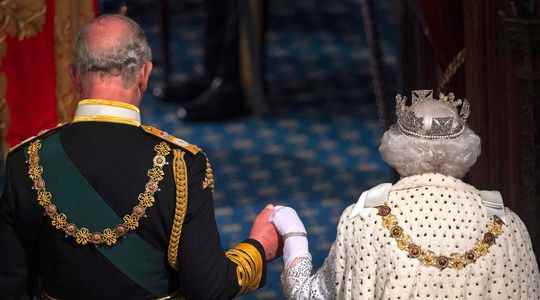The queen is dead, long live the king! A chapter ends, that of the longest reign in British history, another opens, necessarily much shorter, with Charles III. We remember that after the death of Queen Victoria in 1901, her son Edward VII, 59 years old, had reigned only nine years, which did not prevent him from leaving his mark on the European history of the beginning of the last century. Although his reputation in European capitals was that of a light-hearted man, he showed himself to be a fine diplomat. What will be the mark of Prince Charles becoming king? Will the one who suffered a lot of disparaging remarks in his life as heir to the throne prove to be a good sovereign?
The sordid Epstein affair in which his younger brother, Prince Andrew, was incriminated, as well as the departure for California of the couple formed by his son Prince Harry and Meghan Markle, convinced Prince Charles and his eldest son William to one thing: the need, even the urgency, of restricting the royal circle to the few members who work full-time for the institution. And too bad if that offends uncles, aunts, cousins and nephews who have so far benefited from various privileges and substantial emoluments. Started in 2019, this evolution was decided with the blessing of Elizabeth II. This “downsizing” may well be one of the first defining features of Charles’ reign.
While he will probably wait until his mother’s two first cousins, the Duke of Kent and the Duke of Gloucester, are gone, rather than dismissing these high-profile royals who regularly represent the Crown, he won’t take as long tweezers with the young members of the family. He also quickly cut off supplies to Harry, when he and his wife Meghan confessed to wanting to serve and work, in other words to live both from the Crown and from their lucrative contracts with Google, Spotify and Netflix. If Harry and all his cousins had any illusions, they were quickly swept away. Apart from the heir in title William, the grandchildren of Elizabeth will all have to work. Gone is the pernicious status of royal celebrity that the tabloids around the world love and which sometimes transform them, despite themselves, into beasts of the fair.
Charles, the urgency of saving
For Charles, show UK taxpayers they get what they pay for is, according to him, the only way to ensure the survival of the institution. Around him, the royal family will consist of only seven people. Not one more. Namely, his wife Camilla (Duchess of Cornwall), now Queen Consort, his heir Prince William and his wife Kate (Duchess of Cambridge), his younger sister Princess Anne known as Princess Royal, his little brother Prince Edward, and his wife Catherine, Countess of Wessex. For Canadian historian Carolyn Harris, author of Raising Royalty: 1000 Years of Royal Parenting“it’s not just about consolidating resources in fewer hands, but also maintaining some control over the reputation of the institution.”
According to David Haigh, director of Brand Finance, a company specializing in brand valuation, the royal family “is a very formalized influencer and influencer business.” It contributes to the overall economy of the country to the tune of 2.7 billion pounds sterling per year, mainly through tourism and what is called the soft-power, allowing Britain to be mentioned often in the media around the world. Moreover, a simple association with the monarchy guarantees a brand to see its revenue increase. The official suppliers of the royal family, which can be identified by these words on their window, “by royal appointment only”, like Barbour and Johnnie Walker, thus benefit from a prestige that is priceless. The supporters of the Monarchy also repeat constantly that the half a billion pounds sterling that the royal family costs each year does not represent much compared to what it brings to the country and the economy.
“He is a very worthy man”
However, the future of the monarchy in Britain should not be reduced to a question of big money and return on investment. The personality of the sovereign and his relationship to his subjects also determines the future of the institution and of the constitutional status quo. In his latest book The Palace Papers: Inside the House of Windsor, journalist Tina Brown, once a close friend of Princess Diana, believes that with Charles, the royal institution is rather in good hands.
“He is a very dignified man who wants to do good, especially when it comes to defending the environment. For fifty years, he worked tirelessly for the preservation of nature and received little recognition for his work. .” She nevertheless considers the institution fragile. For it to survive, it will be necessary to limit the scandals and to modernize it even more. “Fortunately Charles, but also William and Kate, have chosen to follow Elizabeth’s example, that of fulfilling their duty without fail. It is a chance for the monarchy to have cautious, thoughtful and calm people at its head. .”
After the coronation of Prince Charles, a more concentrated and dynamic English monarchy looms on the horizon, but also less stable, because the reigns of Charles and William will be shorter than that of Elizabeth. Will the institution always be the base of an increasingly disunited Kingdom, tempted both by the withdrawal of Brexit but also prey to centrifugal forces (temptations of Scottish independence and the reunification of the Ireland)? Or will she choose, like other European royal families, to gradually withdraw from the political field? Charles III and his son will have to hold on to a thin thread and continue to walk in the path traced by their mother and grandmother, that of unity and unity.
